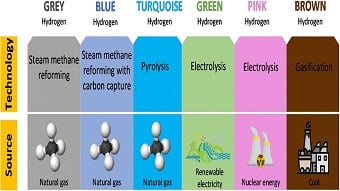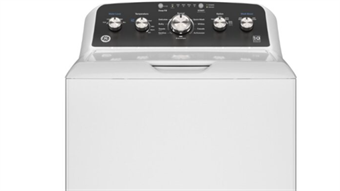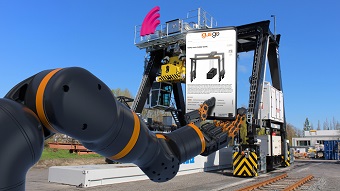How to Select an Automation Systems Integrator
Winn Hardin | June 04, 2015When the time comes to retrofit or build an automation system, industrial facilities have two options: handle the project internally or hire an integrator. Upon examination, many plants find that their engineers may not be well suited to the task of integrating an automation system, or that the engineering department already operates on a shoestring and doesn’t have the time to go it alone.
That leaves the task of selecting an independent automation systems integrator to provide consultation, design, commissioning and support services. But how does a company objectively find the best integrator for the job? As in choosing any vendor, it’s not simply a matter of asking questions, it’s knowing which questions to ask.
Know Your Project Scope
Before the search starts for a systems integrator, companies need to determine the scope of their automation project. Often, project overseers don’t know how to do that.
Without knowing the objective of their system, customers frequently will pick an integrator “who spends a great deal of time doing the company’s work figuring out what it is they want to do,” says George Simmons, project engineer for Huffman Engineering Inc., a control systems integrator. The result often is a change in the project’s scope, implementation length and cost.
In such instances, the engineers responsible internally for the automation project may bring in systems integrators as consultants early in the process. Services could range from developing a functional specification to helping the customer understand their equipment that requires an upgrade. “Sometimes customers just don’t know what they want until they get the technical experts asking them the questions,” says Todd Williams, vice president of the systems division at Leidos Engineering, an automation systems integrator.
Upfront involvement from the integrator can help to eliminate costly mistakes on the back end. According to Williams, facilities often will purchase individual components from separate vendors who claim that their systems are open.
 Standard robotic cells perform dual-arc welding (MIG) for car seat frames. Image source: Tennessee Rand/Lincoln Electric“Users think that just because there is a control system included that, miraculously, the different systems are going to communicate with one another,” he says. “ ‘Open’ doesn’t mean that the subsystems are going to plug and play and work together.”
Standard robotic cells perform dual-arc welding (MIG) for car seat frames. Image source: Tennessee Rand/Lincoln Electric“Users think that just because there is a control system included that, miraculously, the different systems are going to communicate with one another,” he says. “ ‘Open’ doesn’t mean that the subsystems are going to plug and play and work together.”
In one instance, a client of Leidos’ purchased a conveyor/machining cell from a provider who persuaded the client that their system did it all, and [the customer] was just wasting their money going through an integrator,” Williams says. Instead, the project went awry, prompting the customer to hire Leidos on a time and materials (T&M) basis to fix the problems at a price that ended up being three times the cost of the original project budget.
Choosing an Integrator
Problems like these help illustrate the need for an automation systems integration partner. Finding the right one requires thorough evaluation at the outset. One of the biggest challenges facing customers, however, is figuring out who is a professional integrator as opposed to someone with a computer and a smattering of CAD programming — what Huffman Engineering’s Simmons calls the “very low barrier for entry.”
“Somebody with a computer and software can say they are an integrator, and determining who is good and who is bad, who adds value and who doesn't, is a difficult thing,” he says.
Integrators recommend that customers ask basic questions upfront to determine the viability of the business. Initial questions include:
• How long have you been in business? (The more established a company is, the more likely they will be able to support the system in years to come.)
• Do you have licensed engineers on staff?
• What kind of employee turnover do you experience?
• As veteran engineers retire, do you bring in young engineers and equip them with proper skills?
But don’t stop there. Even after you locate a qualified integrator, that doesn’t mean they are a good fit for your company or your project. Consider the following factors:
Speak with recent customers to learn how the system integrator performed. Companies can vet fairly quickly whether an integrator has done projects that are similar in size and technology, Williams says. The true test to distinguish a good integrator from a bad one, however, is contacting end users about their experience.
“The objective of doing a system integration project is to turn the keys over to the client so they can run it themselves,” Williams says. Although the integrator should be available to answer support questions, “if the end user is constantly on the phone with the integrator, or the integrator is always on-site, that’s a red flag.”
How will the integrator get to know your business? Howard Huffman, CEO of Huffman Engineering, says that a good integrator views itself as an extension of the customer’s engineering group, not just another contractor. “You only understand how a company works by spending time there and getting to know their processes,” he says.
This requires project leaders to commit to bringing the integrator up to speed. In some cases, “we know more about the facilities than some of the people working there do” — a value-add especially for companies with high turnover rate or undergoing change of ownership, Huffman says.
Beware the integrator who over-promises. In an attempt to get a customer’s business, some integrators will promise something that they cannot deliver. “If the integrator is not asking you questions or is claiming that they have done everything before or saying something is easy, run away,” says Robert Eastlund of Graftek Imaging, a machine vision integrator.
 Leidos Engineering is developing an integrated airport management system for Denver International Airport that will connect the facility's entire spectrum of operations. Image source: LeidosA good integrator also will not dismiss or ignore customers’ questions, and admits when they do not have an immediate answer but are willing to figure it out, Eastlund says. And if the integrator is unable to provide a solution, he or she will suggest another firm who can help.
Leidos Engineering is developing an integrated airport management system for Denver International Airport that will connect the facility's entire spectrum of operations. Image source: LeidosA good integrator also will not dismiss or ignore customers’ questions, and admits when they do not have an immediate answer but are willing to figure it out, Eastlund says. And if the integrator is unable to provide a solution, he or she will suggest another firm who can help.
Similarly, look for an integrator who will let you know when there’s a problem or if you are doing something that doesn’t make sense, Huffman Engineering’s Simmons says.
Find out who’s responsible for subsystems. Although the goal of an integrator is to provide a turnkey automation system, established systems integrators recognize the need for third-party specialists when they don’t have the time or capabilities in-house. Certain subsystems, including robotics, machine vision and motion control, may require their own integrators. The criteria for hiring a subsystem specialist are similar to selecting an overall automation systems integrator.
Is the integrator vendor-agnostic, or do they have exclusive partnerships? Eastlund sees many integrators who work exclusively with one automation manufacturer’s equipment. By doing so, they may “pigeonhole themselves into what’s available in their single supplier’s arsenal,” he says. The alternative is to work with an integrator who looks for what fits the customer’s needs.
Leidos’ Williams also recommends using a vendor-neutral automation systems integrator “because you’re going to have a lot of proprietary and disparate systems that need to be the right product for the enterprise long term.”
Is the integrator certified? Certifications from industry associations are designed to assure customers that the integrators they select demonstrate high levels of proficiency and expertise. “Certified integrators have gone through pretty rigorous testing,” says Wendy Huffman of Huffman Engineering.
To earn certification from the Control System Integrators Association (CSIA), for example, member companies must meet or exceed 79 criteria and categories such as system development lifecycle, project management and quality assurance management.
For robotic system integration, certification from the Robotic Industries Association (RIA) helps ensure that the integrator “has the knowledge to provide a system that meets all of the safety requirements that are required to prevent injury,” says John Meek, applications engineer with Tennessee Rand, a company in Lincoln Electric’s Advanced Automation Solutions Group that integrates robotic systems.
Meek also says that adherence to the ISO 9000 family of quality management standards “can give customers confidence that a company can manufacture equipment and manage the project process with consistent and controlled methods.”
Do I need to see the integrator’s facility? Many modern automation systems can be integrated remotely. But if the integrator is designing and building something complex like a robotics welding system, it may be important for customers to see that a company has experienced people and the necessary equipment to get the project done in a timely manner, says Meek.
Above all, automation systems integrators recommend that customers view integration as a partnership. As such, the relationship requires “mature people on both sides who can look at what needs to be done and who can fill the gaps,” says Howard Huffman. “You’re not just working with a computer for hire.”




